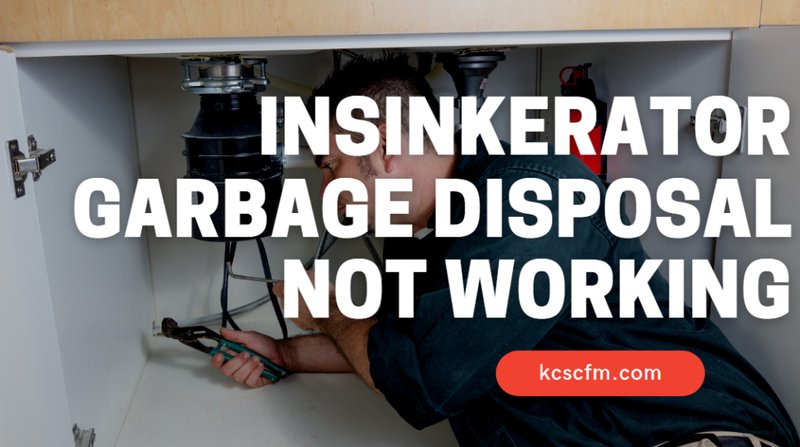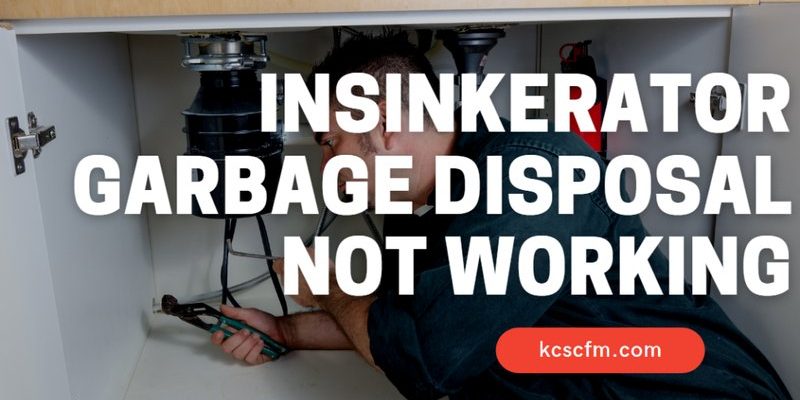
Imagine your garbage disposal as the hardworking engine of your kitchen. It’s always there, faithfully grinding away any unwanted leftovers. But, like any superhero, it has its kryptonite, and Error Code E1 is a sign that something’s amiss. Think of it as a check engine light for your sink. While it might be tempting to ignore it and hope it goes away, this signal is your disposal’s way of saying it needs a bit of TLC. Ignoring it could lead to more significant problems down the line, just like ignoring a small leak in your roof could lead to a soggy disaster.
Understanding Error Code E1 on Your Insinkerator
First off, what exactly does Error Code E1 mean? Well, in the simplest terms, this code is typically an indication of an overload in the system – kind of like when you try to run too many appliances on the same power strip and trip a breaker. Your Insinkerator, while mighty, can’t handle everything all at once. The E1 error is its way of saying, “Hey, I’m taking on too much here!” It’s a safety feature designed to prevent your unit from overheating, which could lead to serious damage.
So why does this happen? Picture this: You’ve just had a big family dinner, and you’re busy tossing all sorts of scraps down the disposal – potato peels, leftover spaghetti, maybe even a forgotten bread crust or two. But here’s the deal: not all food waste is created equal, and some can be more taxing on your disposal than others. The E1 code can also result from a unique set of problems, like a jammed flywheel or an electrical issue. Essentially, it’s your disposal’s SOS signal, urging you to pause and assess the situation.
Now that we’ve established what E1 is, let’s discuss the implications of ignoring it. Sure, you might think you can just hit the reset button and go on with your day. However, without addressing the root cause, you’re essentially putting a band-aid on a potentially larger problem. Over time, ignoring the E1 warning could lead to a permanent breakdown, akin to driving a car with the oil light on – eventually, something’s gonna give.
Troubleshooting the E1 Error
You’re probably wondering, “What’s next?” Well, good news – in many cases, troubleshooting an E1 error doesn’t require the skills of a seasoned handyman. The first step is always the simplest: turn off your disposal and unplug it to ensure safety. Safety first, right? Then, grab a flashlight and peek underneath the sink. Look for a small red reset button located on the bottom or side of the unit. Press it firmly to reset the system, much like rebooting a computer that’s frozen.
If the error persists, consider what might be causing the overload. Have you recently disposed of fibrous vegetables like celery or artichokes? These types of waste can wrap around the blades, causing jams. Use an Allen wrench in the designated hole at the bottom of the disposal to manually turn the flywheel; this may help dislodge any trapped debris. Picture it as untangling a knot – a little patience and careful maneuvering can do wonders.
Still no luck? It might be time to check for any visual obstructions or leaks. Sometimes, when the unit is overloaded, seals can weaken, similar to overblowing a balloon. Inspect hoses and connections for moisture or cracks. If none of these steps work, it might be wise to consult your disposal’s manual or reach out to a professional. After all, sometimes it’s best to call in the experts when the going gets tough.
Preventing Future Errors
Wouldn’t it be great if you could avoid seeing the E1 error ever again? Well, it’s definitely possible with a bit of foresight and care. Start by being mindful of what you feed your disposal. Think of it as a diet for your machine – avoid fibrous or starchy foods that are known culprits for causing issues. Just like avoiding certain foods can help maintain your health, steering clear of these waste types can keep your disposal in tip-top shape.
Routine maintenance is also key. Pouring a mixture of baking soda and vinegar down the disposal every once in a while can help keep things running smoothly; think of it as a soothing bath for your disposal. And, just as you wouldn’t run your car continuously without a break, try not to overload your machine by constantly running it for long periods. Short, frequent uses will keep it in better working condition.
Finally, always remember that a little attention now can save a lot of trouble later. Regular check-ups, being mindful of usage, and addressing issues when they arise can extend the life of your garbage disposal significantly. By showing your Insinkerator a little love, it’ll be grinding away happily for years to come. Now, go forth with confidence, knowing that you’re equipped to tackle that pesky E1 error head-on!
